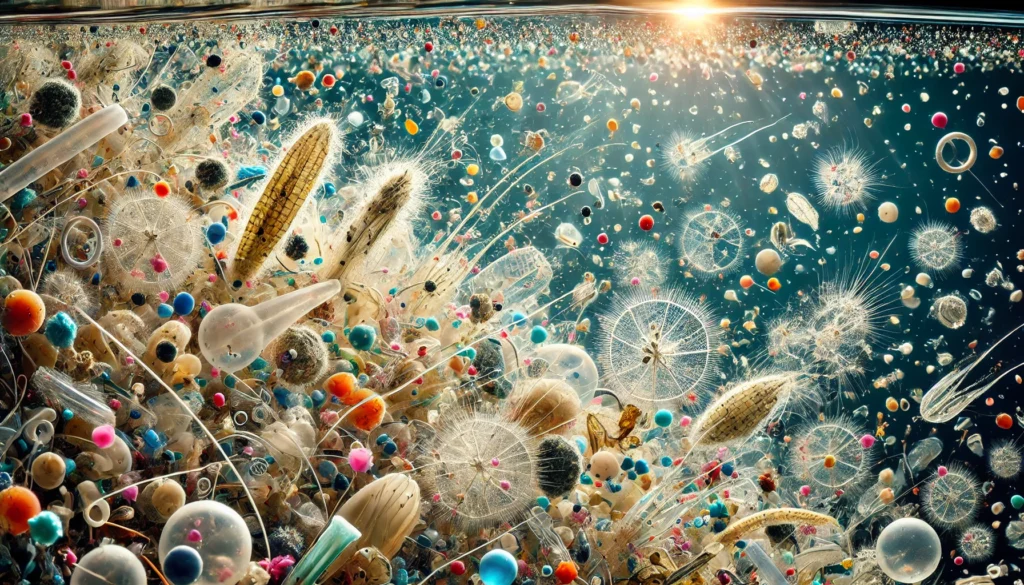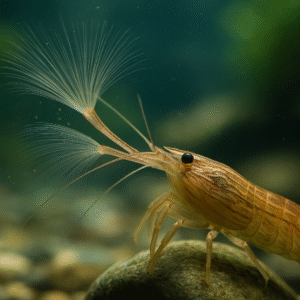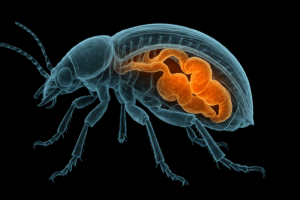Welcome to an eye-opening exploration of a significant issue: the impact of microplastics on marine life. If you enjoy seafood, love beach vacations, or simply care about our planet’s health, understanding this topic is crucial. Let’s dive in and discover how microplastics are affecting our oceans and what we can do about it.
What Are Microplastics?
Microplastics are tiny plastic particles less than 5 millimeters in size. They come from various sources, including the breakdown of larger plastic debris, microbeads in personal care products, and synthetic fibers from our clothes. These minuscule particles are pervasive, spreading across oceans and affecting marine life.
How Does Microplastics Enter the Ocean?
In India, plastic waste is a significant problem, with millions of tons produced annually. When we dispose of plastic improperly, it often ends up in rivers, which eventually carry it to the sea. Once in the ocean, larger plastic items break down into microplastics due to sunlight, waves, and other environmental factors.
The Journey of Microplastics in the Ocean
Once microplastics enter the ocean, they embark on a long and troubling journey. Carried by ocean currents, these tiny particles can travel vast distances, infiltrating every corner of the marine ecosystem. From the surface to the deep sea, microplastics are everywhere.

The Impact on Marine Life
Plankton and Small Fish
Plankton, the tiny organisms forming the base of the marine food web, are among the first to encounter microplastics. Mistaking these particles for food causes plankton to consume them, leading to physical and chemical stress. Small fish that eat plankton also ingest microplastics, which accumulate in their bodies over time.
Larger Marine Animals
As microplastics move up the food chain, their impact grows. Fish, seabirds, turtles, and even whales can ingest microplastics, mistaking them for food. This ingestion can lead to malnutrition, intestinal blockage, and exposure to toxic chemicals attached to the plastic particles.
Case Study: Indian Ocean
The Indian Ocean, one of the most biodiverse marine regions, is heavily affected by plastic pollution. Studies have found microplastics in the stomachs of fish commonly consumed in India, raising concerns about human health and the sustainability of marine resources.
How Does This Affect Humans?
When we eat seafood contaminated with microplastics, these particles enter our bodies. While the full health impact is still under study, potential risks include inflammation, cellular damage, and exposure to harmful chemicals. This issue is particularly relevant for communities relying on seafood as a primary food source.
What Can We Do?
Reduce Plastic Use
The most effective way to combat microplastic pollution is to reduce our use of plastics. Opt for reusable bags, bottles, and containers. Support businesses and policies that promote sustainable practices.
Proper Waste Management
Ensure that plastic waste is disposed of correctly. Participate in and support community clean-up drives. Advocate for better waste management infrastructure in your locality.
Support Research and Advocacy
Support organizations and initiatives focused on researching and addressing plastic pollution. By staying informed and raising awareness, we can collectively push for more stringent regulations and innovative solutions.
Innovative Solutions
Biodegradable Alternatives
Researchers are developing biodegradable plastics that break down more easily in the environment. Supporting these alternatives can reduce the amount of microplastic pollution.
Advanced Filtration Systems
Innovative filtration systems for washing machines can capture synthetic fibers released during washing. Implementing these technologies on a larger scale can significantly reduce microplastic pollution from clothing.
Conclusion
The impact of microplastics on marine life is a pressing issue that affects us all. From the tiny plankton to the fish on our plates, every link in the marine food chain is at risk. By understanding the problem and taking proactive steps, we can protect our oceans and ensure a healthier future for all.
Author’s Note:
Thank you for taking the time to read about the impact of microplastics on marine life. I hope this blog has shed light on the importance of reducing plastic pollution and protecting our oceans. Let’s work together to make a difference!
G.C., Ecosociosphere contributor.
References and Further Reading:
- The Plastic Pollution Crisis in India
- Microplastics in the Ocean: Understanding the Problem
- Microplastics and Perfluorinated Compounds: A Deadly Combination for Aquatic Life. https://www.aspidia.com/post/microplastics-and-perfluorinated-compounds
- Microplastics: Unseen Menace and Strategies for Unveiling the Invisible Threat through Collection Initiatives – Arowana Impact Capital. https://arowanaimpactcapital.com/microplastics/
- What are the major sources of marine debris? – Maritime Guide. https://maritime-union.org/what-are-the-major-sources-of-marine-debris/
- Very Little Plastic is Actually Recycled (& Ways to Reduce Plastic Usage) – Heavenly Green Home. https://heavenlygreenhome.com/very-little-plastic-is-actually-recycled-ways-to-reduce-plastic-usage/
- Ocean Conservation Initiatives and Advocacy | Chloe Blue Scuba Diving. https://www.chloebluescubadiving.com/ocean-conservation




